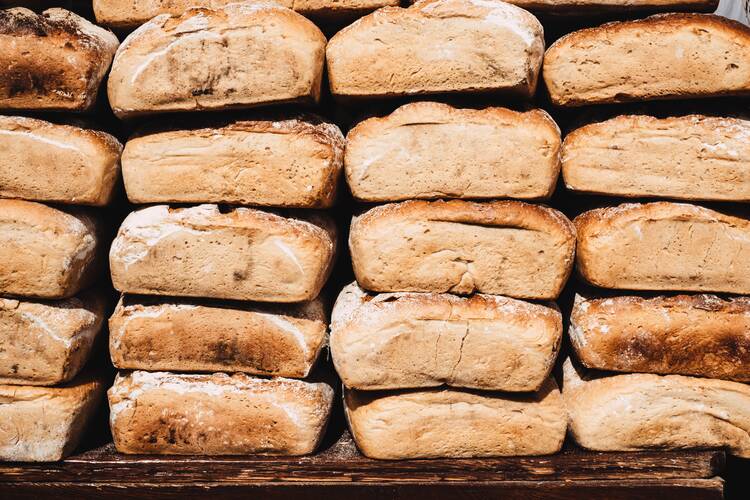All are welcome to God’s inclusive generosity
Today’s readings invite us to reflect on God’s love for humanity. Both the first reading and the Gospel emphasize God’s care by using images of nourishment. As we hear these readings, we can find comfort in God’s love and use it as a way to model our interactions with one another.
You who have no money, come, receive grain and eat. (Is 55:1)
In what ways can you work to be more welcoming and loving in your life?
How can you promote openness in society?
In the first reading, from Isaiah, the people of Judah, having experienced great suffering and exile, are called to an abundant feast. “Come to the water; receive grain and eat; drink wine and milk; delight in rich fare.” This passage is an invitation to restoration, welcoming all people to enjoy God’s generosity. The passage even insists that those without money come to the banquet, bringing together people of various economic statuses to share in the bounty that God provides.
Isaiah can inspire us to strengthen, repair and restore our relationships with one another by inviting everyone to the table. Many people, especially people of color, women and people living in poverty, often feel overlooked and unable to advance. It is incumbent upon all of us, especially those in positions of power and privilege, to work consciously to include all people, especially those who are marginalized and disenfranchised. This is not only to right the wrongs of the past or to check a diversity box, although those are important goals. It is equally important, however, to acknowledge the ability of all people to contribute meaningfully to society, modeling our invitation to others in light of God’s actions.
Today’s Gospel is another reminder of God’s inclusive generosity. We hear the popular miracle story of the multiplication of the loaves and fish to feed a large crowd. All the Gospels include a version of the miracle; Matthew and Mark even tell two versions of the story. Before multiplying the food, Jesus cures people who are sick because he is “moved with pity,” setting the tone for the story. Then, when the disciples attempt to disperse the crowd because food is scarce, Jesus instructs them to feed the people, and then he shows them how.
Looking to heaven, Jesus takes the five loaves and two fish, blesses them, breaks the loaves and gives the food to his followers, who share it with the crowds. This calls to mind the Last Supper, as Jesus’ actions here foreshadow the sacred feast (Mt 26:26-29). The power of Jesus’ act is illustrated by the overabundance that remains after everyone eats, 12 baskets of leftovers. The numbers in the story are symbolic: adding five and two equals seven, a number of perfection and completion; and 12 is a recurring biblical number, as in 12 apostles and 12 tribes of Israel.
The multiplication of the loaves and fish highlights Jesus’ compassion and interest in nourishing the crowds who are with him. Moreover, Jesus incorporates his followers, inviting them and teaching them to care for others, providing a model for how we should care for one another.
This article also appeared in print, under the headline “An Invitation,” in the August 2020, issue.









